|
|
 
 Late Antiquity, A.D. 267-700 Late Antiquity, A.D. 267-700 
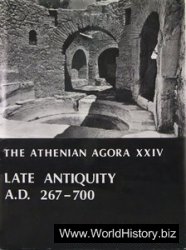 Late Antiquity, A.D. 267-700 Author: Alison Frantz American School of Classical Studies at Athens The Athenian Agora XXIV 1988 ISBN: 0876612249 Pages: 249 Language: English Format: PDF Size: 51 MB This book collects for the first time the archaeological and historical evidence for the area of the Athenian Agora in Late Antiquity, a period which spans the last flourishing of the great philosophical schools, the defeat of classical paganism by Christianity, and the collapse of the late Roman Empire. Although the primary focus of this volume is the material uncovered by the Agora excavations, the study also takes into account past and current discoveries elsewhere in the city. The author draws on archaeological, epigraphical, and literary evidence to present a comprehensive account of the history and topography of the city in the years before A.D. 700. The course of Athenian construction and destruction is traced from the mid-3rd century, through the Herulian invasion, to the period of recovery in the third and fourth centuries (ending with the invasion of the Visigoth, Alaric, in A.D. 396).
 
 Empire of Ancient Egypt Empire of Ancient Egypt 
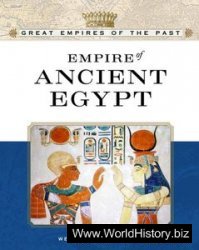 Author: Wendy Christensen Empire of Ancient Egypt Facts on File Great Empires of the Past Language:English 2004 Format: pdf Size: 6.52 mb Empire of Ancient Egypt opens with an introduction to the world and the geographic area in the years leading up to the empire, followed by a brief summary of the history of the empire. Sorting through the myths of popular culture and contradictory historical evidence, this volume provides a clear, detailed picture of the life and history of the ancient Egyptians.
 
 Ancient Europe, 8000 B.C. to A.D. 1000: An Encyclopedia of the Barbarian World (2 volume set) Ancient Europe, 8000 B.C. to A.D. 1000: An Encyclopedia of the Barbarian World (2 volume set) 
Ancient Europe, 8000 B.C. to A.D. 1000: An Encyclopedia of the Barbarian World
Charles Scribners & Sons
Author: Peter I. Bogucki, Pam J. Crabtree
2003
Pages: 1100
Format: PDF
Size: 31 mb
Language: English
A superbly written work that covers a history all but ignored in conventional historical surveys, Ancient Europe, 8,000 B.C.-A.D. 1,000 features 212 essays written for a general readership by 131 contributors.
The span of years covered by the set is explained in the introduction of the first section: "The beginning is marked by the freeing of Europe from glacial ice . . and the end is determined by the spread of Christianity across northern and eastern Europe and the establishment of many European states that persist into the present." Many of the contributors are archaeologists, and the set is focused accordingly.
Read Full Post
 
 High Society: The Central Role of Mind-Altering Drugs in History, Science, and Culture High Society: The Central Role of Mind-Altering Drugs in History, Science, and Culture 
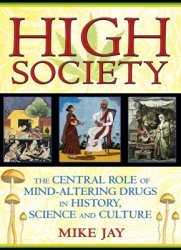 Author: Mike Jay High Society: The Central Role of Mind-Altering Drugs in History, Science, and Culture Park Street Press 2010 Format: pdf, epub Size: 55 Mb + 32 Mb Language: English An illustrated cultural history of drug use from its roots in animal intoxication to its future in designer neurochemicals • Featuring artwork from the upcoming High Society exhibition at the Wellcome Collection in London, one of the world’s greatest medical history collections • Explores the roles drugs play in different cultures as medicines, religious sacraments, status symbols, and coveted trade goods • Reveals how drugs drove the global trade and cultural exchange that made the modern world • Examines the causes of drug prohibitions a century ago and the current “war on drugs” Every society is a high society. Every day people drink coffee on European terraces and kava in Pacific villages; chew betel nut in Indonesian markets and coca leaf on Andean mountainsides; swallow ecstasy tablets in the clubs of Amsterdam and opium pills in the deserts of Rajastan; smoke hashish in Himalayan temples and tobacco and marijuana in every nation on earth. Exploring the spectrum of drug use throughout history--from its roots in animal intoxication to its future in designer neurochemicals--High Society paints vivid portraits of the roles drugs play in different cultures as medicines, religious sacraments, status symbols, and coveted trade goods. From the botanicals of the classical world through the mind-bending self-experiments of 18th- and 19th-century scientists to the synthetic molecules that have transformed our understanding of the brain, Mike Jay reveals how drugs such as tobacco, tea, and opium drove the global trade and cultural exchange that created the modern world and examines the forces that led to the prohibition of opium and cocaine a century ago and the “war on drugs” that rages today.
 
 Egyptian Wall Paintings: The Metropolitan Museum of Art's Collection of Facsimiles Egyptian Wall Paintings: The Metropolitan Museum of Art's Collection of Facsimiles 
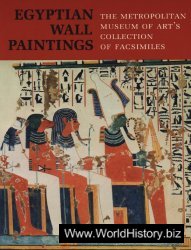 Author: Wilkinson, Charles K. Egyptian Wall Paintings: The Metropolitan Museum of Art's Collection of Facsimiles Metropolitan Museum 1983 Format: PDF Size: 40,44 mb Language: English In 1959 the Metropolitan Museum's Department of Egyptian Art began a reinstallation of its collection. At that time the objectives envisioned were modest: a simple rearrangement for chronological consistency; additional lighting; and a few architectural changes. The project changed with curators and directors, however, and the effort now planned for completion in 1983 is a far-reaching one. All objects in the collection are to be displayed, either in primary or secondary galleries; consequently a review of the condition of each work and a reassessment of its dating and importance were undertaken. Under this program the department's extensive collection of facsimiles of wall decoration, principally produced by the Graphic Section of the Museum's Egyptian Expedition between 1907 and 1937 and supported by the Rogers Fund, received new attention. About half of the facsimiles were exhibited in 1930, accompanied by a small catalogue by Ambrose Lansing, then Associate Curator in the Department of Egyptian Art, and selected examples appeared in the old galleries. In 1976, with the opening of Phase I of the complete reinstallation, virtually all the pictures were placed on exhibition.
 
 Nomads, Tribes, and the State in the Ancient Near East: Cross-disciplinary Perspectives Nomads, Tribes, and the State in the Ancient Near East: Cross-disciplinary Perspectives 
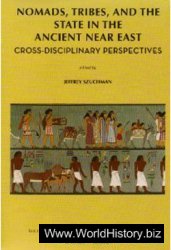 Nomads, Tribes, and the State in the Ancient Near East: Cross-disciplinary Perspectives Author: composite authors The Oriental Institute of the University of Chicago 2009 Pages: 304 Language: English Format: pdf Size: 6.28 Mb For decades, scholars have struggled to understand the complex relationship between pastoral nomadic tribes and sedentary peoples of the Near East. The Oriental Institute's fourth annual post-doc seminar (March 7-8, 2008), Nomads, Tribes, and the State in the Ancient Near East, brought together archaeologists, historians, and anthropologists to discuss new approaches to enduring questions in the study of nomadic peoples, tribes, and states of the past: What social or political bonds link tribes and states? Could nomadic tribes exhibit elements of urbanism or social hierarchies? How can the tools of historical, archaeological, and ethnographic research be integrated to build a dynamic picture of the social landscape of the Near East? This volume presents a range of data and theoretical perspectives from a variety of regions and periods, including prehistoric Iran, ancient Mesopotamia and Egypt, seventh-century Arabia, and nineteenth-century Jordan.
 
 The Parthenon Enigma The Parthenon Enigma 
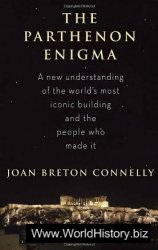 Author: Joan Breton Connelly The Parthenon Enigma Knopf 2014 Format: epub Size: 133 Mb Language: English Built in the fifth century b.c., the Parthenon has been venerated for more than two millennia as the West’s ultimate paragon of beauty and proportion. Since the Enlightenment, it has also come to represent our political ideals, the lavish temple to the goddess Athena serving as the model for our most hallowed civic architecture. But how much do the values of those who built the Parthenon truly correspond with our own? And apart from the significance with which we have invested it, what exactly did this marvel of human hands mean to those who made it? In this revolutionary book, Joan Breton Connelly challenges our most basic assumptions about the Parthenon and the ancient Athenians. Beginning with the natural environment and its rich mythic associations, she re-creates the development of the Acropolis—the Sacred Rock at the heart of the city-state—from its prehistoric origins to its Periklean glory days as a constellation of temples among which the Parthenon stood supreme. In particular, she probes the Parthenon’s legendary frieze: the 525-foot-long relief sculpture that originally encircled the upper reaches before it was partially destroyed by Venetian cannon fire (in the seventeenth century) and most of what remained was shipped off to Britain (in the nineteenth century) among the Elgin marbles. The frieze’s vast enigmatic procession—a dazzling pageant of cavalrymen and elders, musicians and maidens—has for more than two hundred years been thought to represent a scene of annual civic celebration in the birthplace of democracy. But thanks to a once-lost play by Euripides (the discovery of which, in the wrappings of a Hellenistic Egyptian mummy, is only one of this book’s intriguing adventures), Connelly has uncovered a long-buried meaning, a story of human sacrifice set during the city’s mythic founding. In a society startlingly preoccupied with cult ritual, this story was at the core of what it meant to be Athenian. Connelly reveals a world that beggars our popular notions of Athens as a city of staid philosophers, rationalists, and rhetoricians, a world in which our modern secular conception of democracy would have been simply incomprehensible.
 
 Amorium A Byzantine City in Anatolia - An Archaeological Guide Amorium A Byzantine City in Anatolia - An Archaeological Guide 
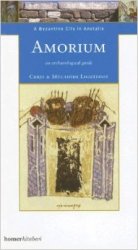 Author: C S Lightfoot, Mucahide Lightfoot Amorium A Byzantine City in Anatolia - An Archaeological Guide Homer Kitabevi ISBN: 975829380X 2007 Format: PDF Size: 12,6 МБ Language: English Pages: 180 Although less well known than some Anatolian sites, it is Amorium's significance as a major settlement after the Roman period that makes it so important. The excavation programme's main aim has been to shed light on the Byzantine settlement that flourished here until the 11th century AD. This guidebook is an attempt to fill in some of the gaps in the archaeology, and to bring the city and its history back to life.
 
 Iran in the Ancient East Iran in the Ancient East 
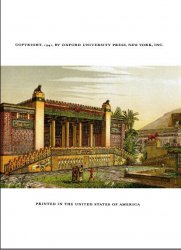 Author: Herzfeld Ernst E Iran in the Ancient Eas Oxford university press 1941 Format: PDF Size: 22 Mb Language: English Archeological Studies Presented in the Lowell Lectures at Boston. The prehistoric period. The dawn of history. The achaemenian period. The arsacidan and sasanian periods.
 
 Bronze Age Connections: Cultural Contact in Prehistoric Europe Bronze Age Connections: Cultural Contact in Prehistoric Europe 
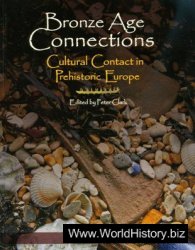 Author: Peter Clark (Editor) Bronze Age Connections: Cultural Contact in Prehistoric Europe Oxbow Books 2009 Format: epub Size: 20.8 Mb Language: English New and exciting discoveries on either side of the English Channel in recent years have begun to show that people living in the coastal zones of Belgium, southern Britain, northern France and the Netherlands shared a common material culture during the Bronze Age, between three and four thousand years ago. They used similar styles of pottery and metalwork, lived in the same kind of houses and buried their dead in the same kind of tombs, often quite different to those used by their neighbours further inland. The sea did not appear to be a barrier to these people but rather a highway, connecting communities in a unique cultural identity; the 'People of La Manche'. Symbolic of these maritime Bronze Age Connections is the iconic Dover Bronze Age boat, one of Europe's greatest prehistoric discoveries and testament to the skill and technical sophistication of our Bronze Age ancestors. This monograph presents papers from a conference held in Dover in 2006 organised by the Dover Bronze Age Boat Trust, which brought together scholars from many different countries to explore and celebrate these ancient seaborne contacts. Twelve wide-ranging chapters explore themes of travel, exchange, production, magic and ritual that throw new light on our understanding of the seafaring peoples of the second millennium BC.
 
 Alexander of Macedon, 356-323 B.C.: A Historical Biography Alexander of Macedon, 356-323 B.C.: A Historical Biography 
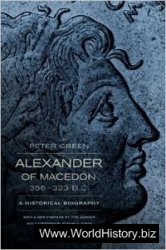 Author: Peter Green Alexander of Macedon, 356-323 B.C.: A Historical Biography University of California Press ISBN: 0520275861 2013 Format: PDF Size: 56,5 МБ Language: English Pages: 640 Until recently, popular biographers and most scholars viewed Alexander the Great as a genius with a plan, a romantic figure pursuing his vision of a united world. His dream was at times characterized as a benevolent interest in the brotherhood of man, sometimes as a brute interest in the exercise of power. Green, a Cambridge-trained classicist who is also a novelist, portrays Alexander as both a complex personality and a single-minded general, a man capable of such diverse expediencies as patricide or the massacre of civilians. Green describes his Alexander as "not only the most brilliant (and ambitious) field commander in history, but also supremely indifferent to all those administrative excellences and idealistic yearnings foisted upon him by later generations, especially those who found the conqueror, tout court, a little hard upon their liberal sensibilities." This biography begins not with one of the universally known incidents of Alexander's life, but with an account of his father, Philip of Macedonia, whose many-territoried empire was the first on the continent of Europe to have an effectively centralized government and military. What Philip and Macedonia had to offer, Alexander made his own, but Philip and Macedonia also made Alexander form an important context for understanding Alexander himself. Yet his origins and training do not fully explain the man.
 
 Rome and Persia in late Antiquity Rome and Persia in late Antiquity 
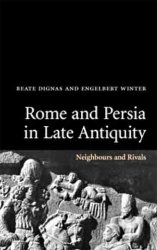 Author: Beate Dignas Cambridge University Press 2007 365 Format: pdf Size: 4 mb Language: english Relations between Romans and Persians in late antiquity were bound to be turbulent, to say the least. We are looking at those who conquered the possessions of the heirs of Alexander the Great versus those who claimed to be the heirs of the Achaemenid Empire, which was conquered by Alexander the Great. ‘Heritage’ and its claims often foreshadow war, in this case centuries of warfare that lasted throughout the existence of the relationship between the two powers, i.e. the third to the seventh century ad. On both sides war was accompanied by complex attempts to justify their respective goals, in both active and reactive ways. Rome’s claim for world domination was accompanied by a sense of mission and pride in Western civilisation; it was met by Eastern myths and oracles prophesying the downfall of the Western power.1 Our sources reflect strong Roman ambitions to become a guarantor of peace and order. Simultaneously, they reflect long-standing prejudices with regard to the Eastern power’s different customs, religious structures, languages and forms of government. As a consequence, a wide gap separated the two cultures and negative attitudes that stemmed from existing political, military and economic rivalries were constantly reinforced. In the company of most ancient – and often Western – observers, it is tempting to associate our theme with an ‘everlasting’ conflict between West and East, between a ‘civilised’ Roman world and a barbarian enemy, and hence to describe the struggle between the two super powers as a clash of fundamentally alien cultures.
 
 Emperor Worship and Roman Religion Emperor Worship and Roman Religion 
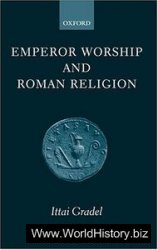 Author: Ittai Gradel Emperor Worship and Roman Religion Clarendon Press 2002 ISBN: 0199275483 Language: English Pages: 428 Format: PDF Size: 4,07 МБ While Roman religion worshipped a number of gods, one kind in particular aroused the fury of early Christians and the wonder of scholars: the cult of Roman emperors alive or dead. Was the divinity of emperors a glue that held the Empire together? Were rulers such as Julius Caesar and Caligula simply mad to expect such worship of themselves? Or was it rather a phenomenon which has only been rendered incomprehensible by modern and monotheistic ideas of what religion is--or should be--all about? This book presents the first study of emperor worship among the Romans themselves, both in Rome and in its heartland Italy. It argues that emperor worship was indeed perfectly in keeping with Roman religious tradition, which has been generally misunderstood by a posterity imbued with radically different notions of the relationship between humans and the divine.
 
 The Secret History of the Sword: Adventures in Ancient Martial Arts The Secret History of the Sword: Adventures in Ancient Martial Arts 
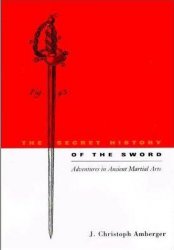 : The Secret History of the Sword: Adventures in Ancient Martial Arts Author : J.Christopher Amberger Multi-Media Books : 1999 ISBN: 1892515040 Pages: 281 Format : PDF Size : 33,8 MB Language : English This book is an entertaining read and is certainly well researched in parts. Amberger avoids some of the problem that Richard Cohen encountered in "By the sword" but by and large they both extend their considerable expertise just a bit too broadly to support their arguments. His personal experience in the German duelling halls are exciting to read. He wisely avoids much discussion concerning metalurgy and the actual production of blades and doesn't stray far from the European/American tradition which he knows well.
 
 In God's Path: The Arab Conquests and the Creation of an Islamic Empire In God's Path: The Arab Conquests and the Creation of an Islamic Empire 
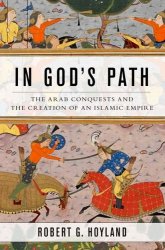 Author: Robert G. Hoyland In God's Path: The Arab Conquests and the Creation of an Islamic Empire (Ancient Warfare and Civilization) Oxford University Press 2014 Format: PDF Size: 13.5 Mb Language: English In just over a hundred years--from the death of Muhammad in 632 to the beginning of the Abbasid Caliphate in 750--the followers of the Prophet swept across the whole of the Middle East, North Africa, and Spain. Their armies threatened states as far flung as the Franks in Western Europe and the Tang Empire in China. The conquered territory was larger than the Roman Empire at its greatest expansion, and it was claimed for the Arabs in roughly half the time. How this collection of Arabian tribes was able to engulf so many empires, states, and armies in such a short period has perplexed historians for centuries. Most accounts of the Arab invasions have been based almost solely on the early Muslim sources, which were composed centuries later to illustrate the divinely chosen status of the Arabs. Robert Hoyland's groundbreaking new history assimilates not only the rich biographical information of the early Muslim sources but also the many non-Arabic sources, contemporaneous or near-contemporaneous with the conquests. In God's Path begins with a broad picture of the Late Antique world prior to the Prophet's arrival, a world dominated by two superpowers: Byzantium and Sasanian Persia. In between these empires, emerged a distinct Arabian identity, which helped forge the inhabitants of western Arabia into a formidable fighting force. The Arabs are the principal actors in this drama yet, as Hoyland shows, the peoples along the edges of Byzantium and Persia--the Khazars, Bulgars, Avars, and Turks--all played critical roles in the remaking of the old world order. The new faith propagated by Muhammad and his successors made it possible for many of the conquered peoples to join the Arabs in creating the first Islamic Empire. Well-paced, comprehensive, and eminently readable, In God's Path presents a sweeping narrative of a transformational period in world history.
 
 Ancient Maya Political Dynamics Ancient Maya Political Dynamics 
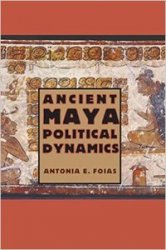 Author: Antonia E. Foias Ancient Maya Political Dynamics University Press of Florida ISBN: 0813060893 2013 Format: PDF Size: 19,1 МБ Language: English Pages: 306 "An impressive overview of recent scholarship coupled with the results of a long-term research project at the site and region of Motul de San José. It contributes significantly to the anthropological literature on politics and power." --Daniela Triadan, coeditor of Burned Palaces and Elite Residences of Aguateca "A long overdue and particularly welcome piece of scholarly work. It synthesizes, digests, and makes available the results of the tremendous boom in political studies in the Maya area that has occurred in the last twenty years as a consequence of rapid glyph decipherment, increased archaeological data, and more sophisticated theoretical modeling." --Eleanor M. King, Howard University The study of politics, a dominating force throughout history, can provide great insight into the lives of ancient people. Because of the richness and complexity of Maya society, archaeologists and anthropologists have spent decades attempting to reconstruct its political systems.
 
 An Archaeological History of Indian Buddhism An Archaeological History of Indian Buddhism 
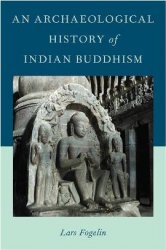 Author: Lars Fogelin An Archaeological History of Indian Buddhism Oxford University Press 2015 Format: PDF Size: 7.45 Mb Language: English An Archaeological History of Indian Buddhism is a comprehensive survey of Indian Buddhism from its origins in the 6th century BCE, through its ascendance in the 1st millennium CE, and its eventual decline in mainland South Asia by the mid-2nd millennium CE. Weaving together studies of archaeological remains, architecture, iconography, inscriptions, and Buddhist historical sources, this book uncovers the quotidian concerns and practices of Buddhist monks and nuns (the sangha), and their lay adherents--concerns and practices often obscured in studies of Buddhism premised largely, if not exclusively, on Buddhist texts. At the heart of Indian Buddhism lies a persistent social contradiction between the desire for individual asceticism versus the need to maintain a coherent community of Buddhists. Before the early 1st millennium CE, the sangha relied heavily on the patronage of kings, guilds, and ordinary Buddhists to support themselves. During this period, the sangha emphasized the communal elements of Buddhism as they sought to establish themselves as the leaders of a coherent religious order. By the mid-1st millennium CE, Buddhist monasteries had become powerful political and economic institutions with extensive landholdings and wealth. This new economic self-sufficiency allowed the sangha to limit their day-to-day interaction with the laity and begin to more fully satisfy their ascetic desires for the first time. This withdrawal from regular interaction with the laity led to the collapse of Buddhism in India in the early-to-mid 2nd millennium CE. In contrast to the ever-changing religious practices of the Buddhist sangha, the Buddhist laity were more conservative--maintaining their religious practices for almost two millennia, even as they nominally shifted their allegiances to rival religious orders. This book also serves as an exemplar for the archaeological study of long-term religious change through the perspectives of practice theory, materiality, and semiotics.
 
 Milestones in Archaeology: A Chronological Encyclopedia Milestones in Archaeology: A Chronological Encyclopedia 
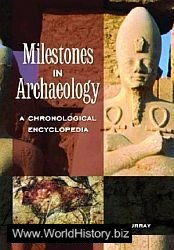 Author: Tim Murray Milestones in Archaeology: A Chronological Encyclopedia ABC-CLIO ISBN: 1851096450 2007 Language: English Format: PDF Size: 12,8 Mb, 639 pages The history of archaeology leads from the musty collections of dilettante antiquarians to high-tech science. The book identifies three major developmental periods—Birth of Archaeology (16th–18th centuries), Archaeology of Origins and Empires (19th century), and World Archaeology (20th century). An introductory essay acquaints the reader with the essence of the science for each period. The short entries comprising the balance of the book expand on the themes introduced in the essays. Organized around personalities, techniques, controversies, and conflicts, the encyclopedia brings to life the history of archaeology. It broadens the general reader's knowledge by detailing the professional significance of widely known discoveries while introducing to wider knowledge obscure but important moments in archaeology. Archaeology is replete with the visionaries and swashbucklers of popular myth; it is also filled with careful and dedicated scientists.
  |
|























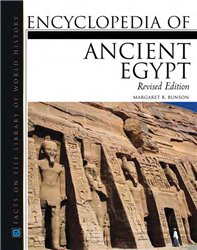
 World History
World History









